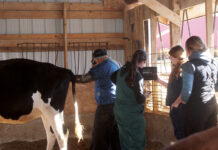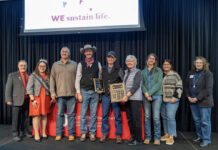WASHINGTON – Farmers and ranchers seeking to learn more about the best agricultural systems will find many ideas in the new free publication 2006/07 SARE Highlights.
SARE, or the Sustainable Agriculture Research and Education program, awards grants to promote farming and ranching systems that are environmentally and fiscally sound.
To help share its experiences with the a larger portion of the farming community it published 12 of its most innovative research projects.
Article example. In New York, a mentoring program paired experienced grazers with farmers in the Finger Lakes region to improve pastured livestock systems.
The program helped 100 farmers achieve such goals as improving fencing and lanes or converting crop fields to productive pasture on 5,500 acres in the environmentally sensitive area.
“Our goal was to curb erosion [into the lakes], but also to sustain small and medium-sized farms,” said Richard Winnett, coordinator of the Finger Lakes Resource Conservation and Development Council.
The program “just exploded because we recruited good people to be our grazing advocates and develop plans for individual operations.”
Potato smarts. In Idaho, a researcher who showcased the strategies of successful potato growers prompted 25 farmers to try new conservation measures to manage pests and maximize returns with less fertilizer.
His efforts mean that 110,000 acres, one-fourth of the state’s potato production, is managed with conservation-oriented strategies.
“Too many growers have a recipe approach to farming based on what worked last year, regardless of the situation,” said Bryan Hopkins, a potato cropping specialist at the University of Idaho.
“The crux of the issue is basing it on site-specific needs.”
Smart marketing. A Wisconsin farming couple that raises lambs and goats attracted new, loyal customers from an immigrant population, in part by customizing slaughter practices.
In their busiest month, they sold 500 goats and lambs at $100 each.
Water wise. Re-using water from shrimp ponds to irrigate olive trees saves water and supplies fertilizer, according to research at the University of Arizona.
Bee bait. In Florida, researchers devised a simple, non-chemical bait to lure a pest of honeybees away from hives, protecting an industry that produces 17 million pounds of honey annually.
2006/07 SARE Highlights is the latest of a series of publications that feature the most creative research funded by SARE.
Get 4 Weeks of Farm and Dairy Home Delivered









